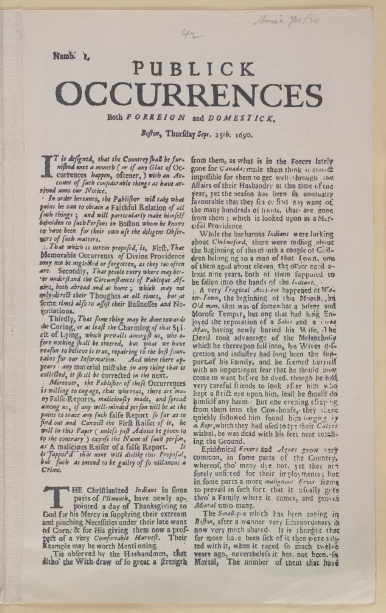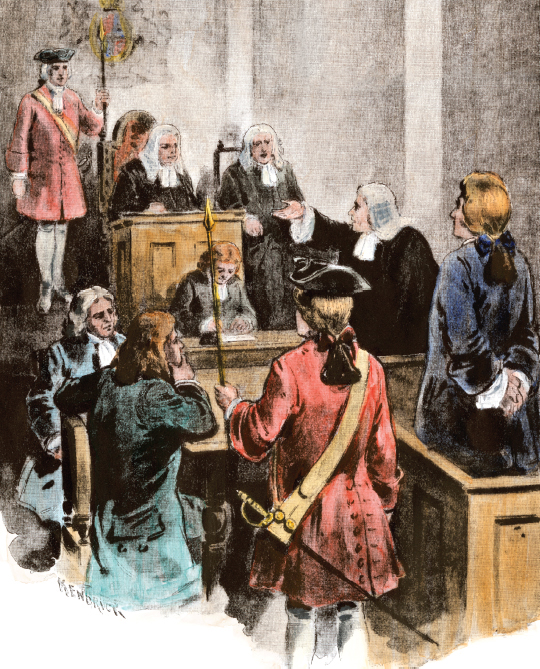Colonial Newspapers and the Partisan Press
Printed Page 63

Inspired by the introduction of the printing press in Europe, American colonists began producing their first newspapers in the late seventeenth century. One function of these publications, collectively known as the partisan press, was to critique government and disseminate the views of the different political parties that had begun to emerge and sponsor newspapers. Another function of these early papers was a commercial role, serving business leaders by offering the latest updates on markets and reporting on ship cargoes arriving from Europe. The partisan piece of the early press evolved into the editorial pages we see in today’s newspapers, while the commercial function of these early papers foreshadowed today’s business sections.
The first newspaper, Publick Occurrences, Both Forreign and Domestick, was published on September 25, 1690, by Boston printer Benjamin Harris, but it was banned after just one issue for its negative view of British rule. In the early 1700s, other papers cropped up, including Benjamin Franklin’s Pennsylvania Gazette—which many historians regard as the best of the colonial papers. The Gazette was also one of the first papers to make money by printing advertisements alongside news.

One significant colonial paper, the New-York Weekly Journal, was founded in 1733 by the Popular Party, a political group that opposed British rule. Journal articles included attacks on the royal governor of New York. The party had installed John Peter Zenger as printer of the Journal, and in 1734 he was arrested for seditious libel when one of his writers defamed a public official’s character in print. Championed by famed Philadelphia lawyer Andrew Hamilton, Zenger won his case the following year. The Zenger decision helped lay a foundation—the right of a democratic press to criticize public officials—for the First Amendment to the Constitution, adopted as part of the Bill of Rights in 1791.
By 1765, the American colonies boasted about thirty newspapers, all of them published weekly or monthly. In 1784, the first daily paper began operations. But even the largest of these papers rarely reached a circulation of fifteen hundred. Readership was largely confined to educated or wealthy men who controlled local politics and commerce (and who could afford newspaper subscriptions).